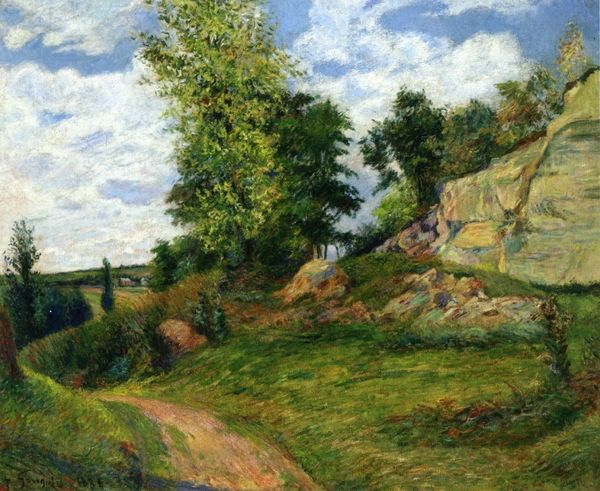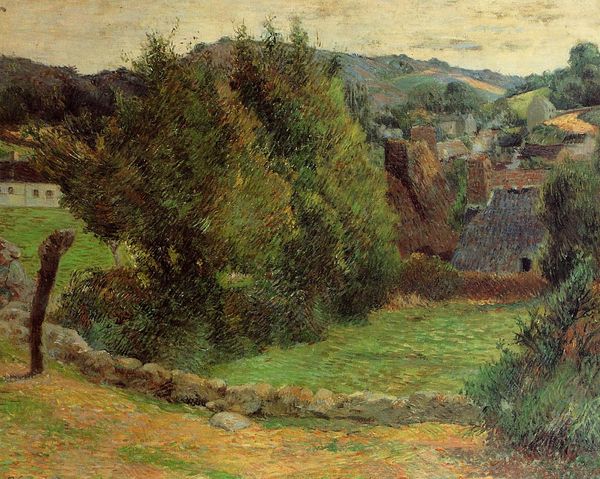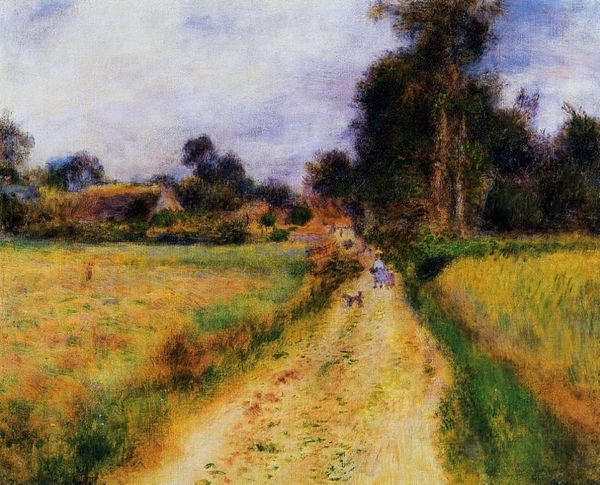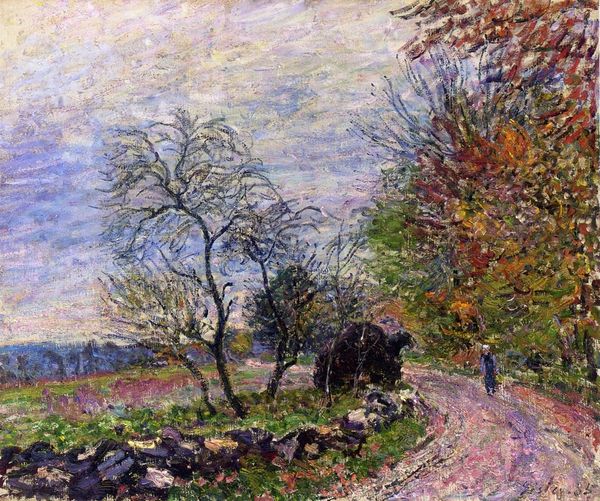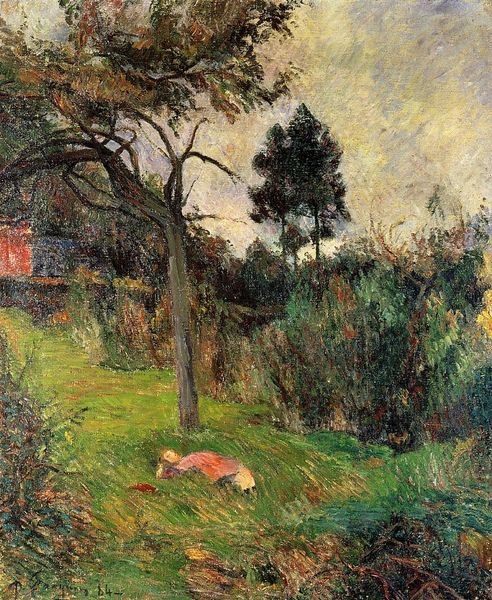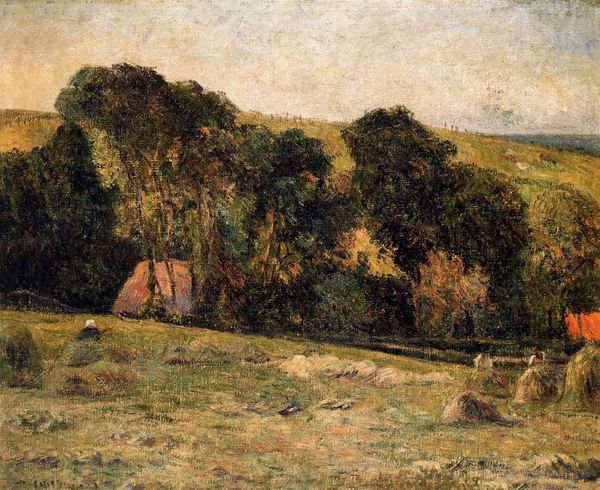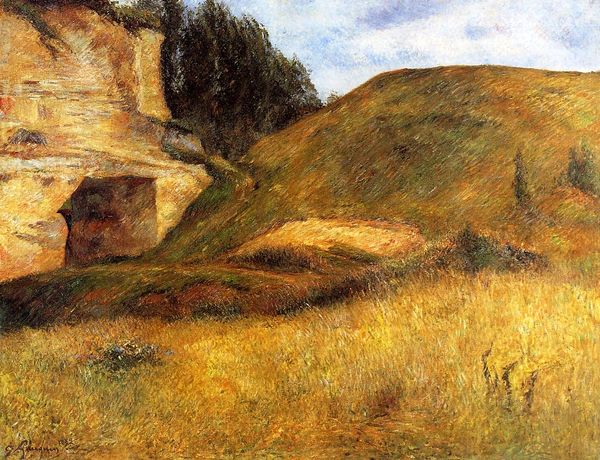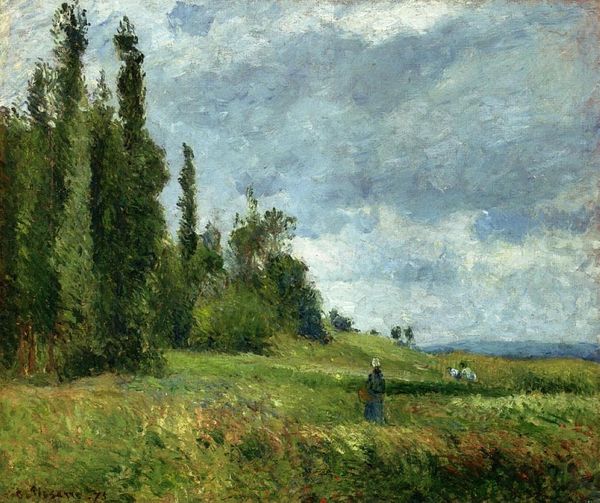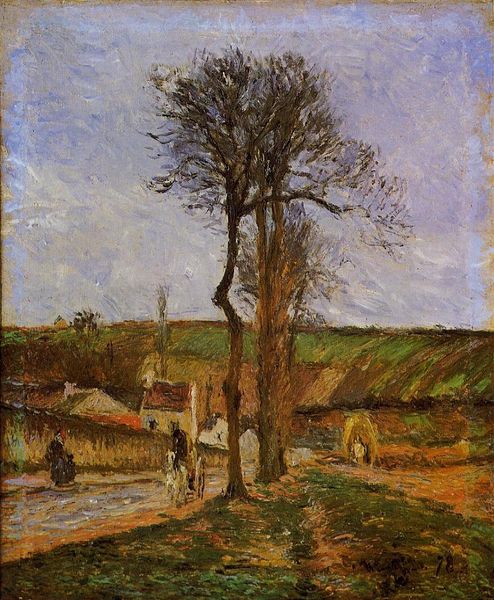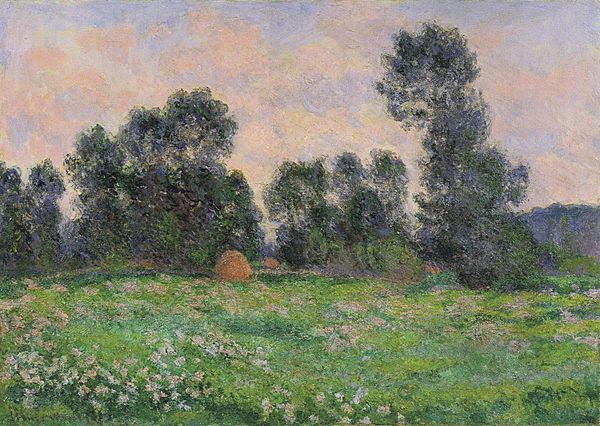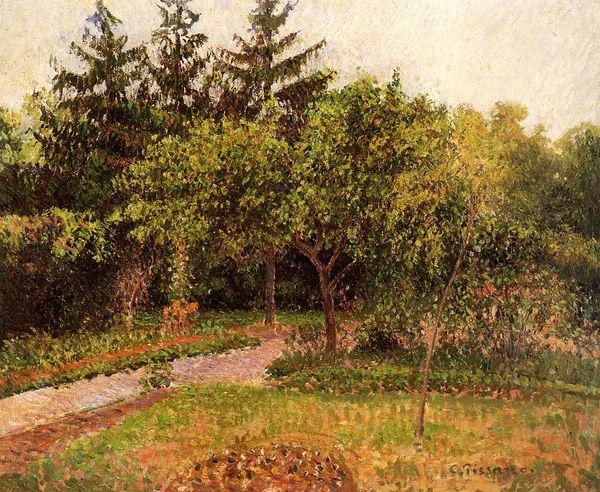
painting, plein-air, oil-paint
#
painting
#
impressionism
#
plein-air
#
oil-paint
#
landscape
#
impressionist landscape
#
oil painting
#
geometric
#
post-impressionism
Copyright: Public domain
Paul Gauguin captured this landscape in his painting "Quarries at Pontoise II", using oil on canvas. The quarries were located in Pontoise, France, a commune in the northwestern suburbs of Paris. The art of landscape has a long and rich history. It has served multiple purposes for both artists and the public. The late 19th century was a time of rapid industrialization and urbanization, where artists often depicted nature as a refuge from the urban world. Here, the landscape is presented as a scene of labor, representing the economic conditions of the working class. Gauguin seems to be critiquing the social conditions of his time, where the working class was often exploited and overlooked. Studying Gauguin's personal writings, or the records of local industries, helps one understand the social context of this work. The meaning of art is contingent on the social and institutional context in which it was made.
Comments
No comments
Be the first to comment and join the conversation on the ultimate creative platform.
